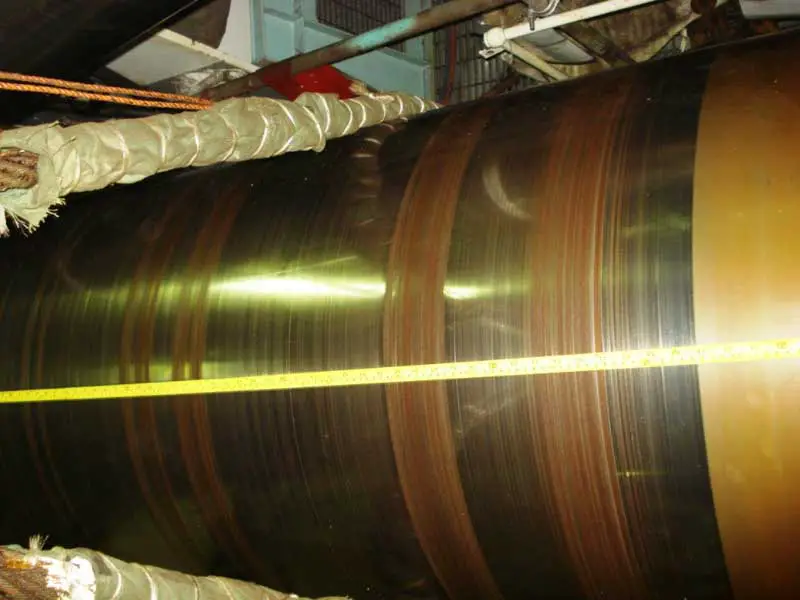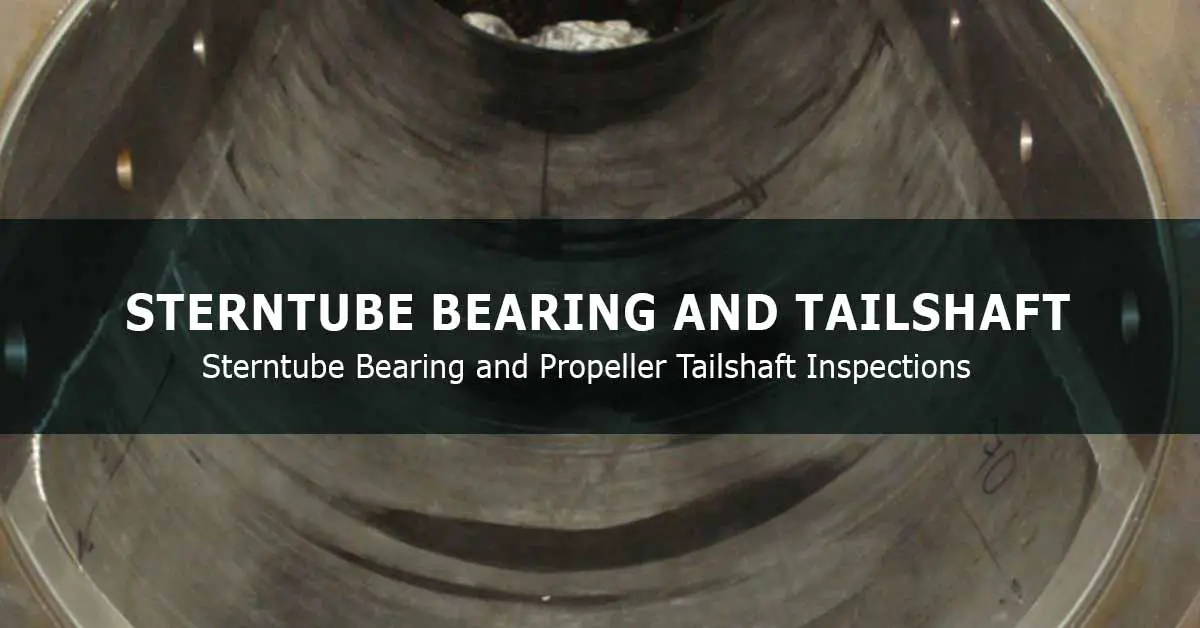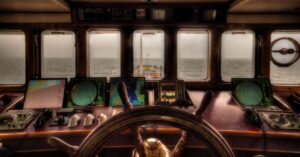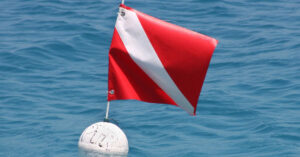Sterntube bearing and propeller shaft journal inspections are typically conducted as a part of the special survey or in the event of suspected bearing damage. While the Class surveyor is responsible for the formal assessment, it is useful for all involved to understand the fundamentals of bearing and shaft journal examinations.
For vessels having whitemetal sterntube bearings, the operator generally has bearing temperature as well as oil analysis records available to trend bearing condition. However, the results are not infallible, e.g., bearing damage may occur at a location remote from the temperature sensor, and poor oil sampling practice can produce significant variations in results for wear metal concentrations leading to erosion of certitude in the results. Visual inspection and bore diameter measurements provide the final substantiation of the condition.
For vessels having water lubricated, non-metallic sterntube bearings, the operator is limited to poker gauge wear-down measurements to trend bearing conditions. Again, visual inspection and bore diameter measurements provide the final determination of the condition.
Sterntube bearing inspection
The objective of the inspection is to characterize the condition with detail of wear and any damage. The observations should provide evidence of any damage mechanism. To assess wear, the bearing bore should be measured using an inside micrometer at axial steps of about 150 mm or less and at three directions, vertical, 120°, and 240°. Sterntube aft and forward bearings should be inspected and measured.
For metallic (whitemetal) bearings, the following points should be observed:
- The bore diameter measurements indicate wear. Wear usually is most significant in the vertical direction, given the shaft typically runs around the 6 o’clock position.
- The shaft journal should mainly work near the extreme aft end of the bearing at speeds up to about half ahead and towards the forward end at high speeds (power). That is, the bearing lower half should have polishing marks along the full axial length with heavier polishing at the aft end, Figure 1.
- An adverse bearing condition is generally easily recognized, such as thermal wipe, Figure 2 or fatigue material loss, Figure 3. Guidance regarding the identification of damage can be found in BS/ DIN ISO 7146:2008 (Plain bearings – appearance and characterization of damage to metallic hydrodynamic bearings).
- The shaft journal should mainly run in the lower half of the bearing. Significant polishing in the upper half may suggest a problem, such as poor wake inflow to the propeller or frequent heavy maneuvering at high shaft speeds.
- The washways supply fresh lubricant to the full length of the bearing. However, significant shaft loads cannot be supported at the washways. A thermal wipe or significant wear in the area of either washway would suggest the shaft had run in the washway, perhaps during maneuvering.
- Typical light running contact produces a highly polished appearance. This can occur during start/ stop or from fine contamination particles in the lubricant. Heavy scoring and/ or dull, heavy wear typically results from large contamination particles or material from advanced wear.
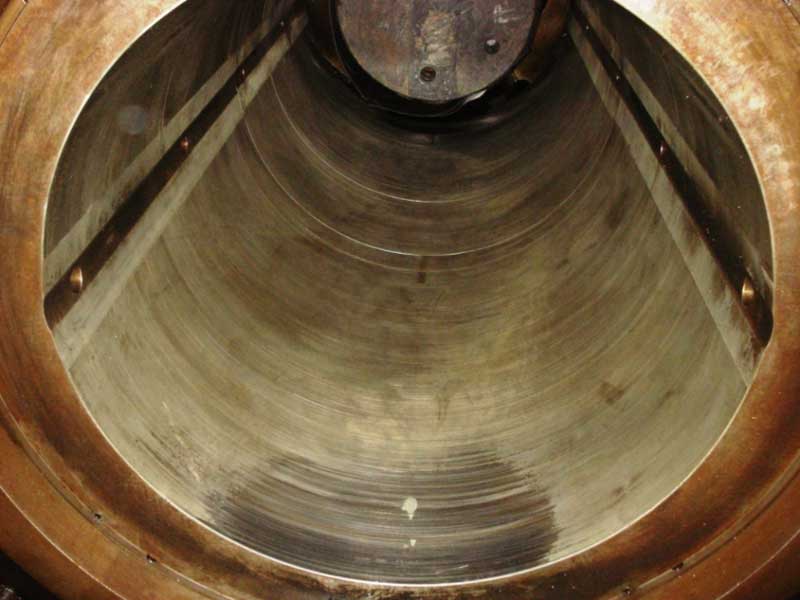
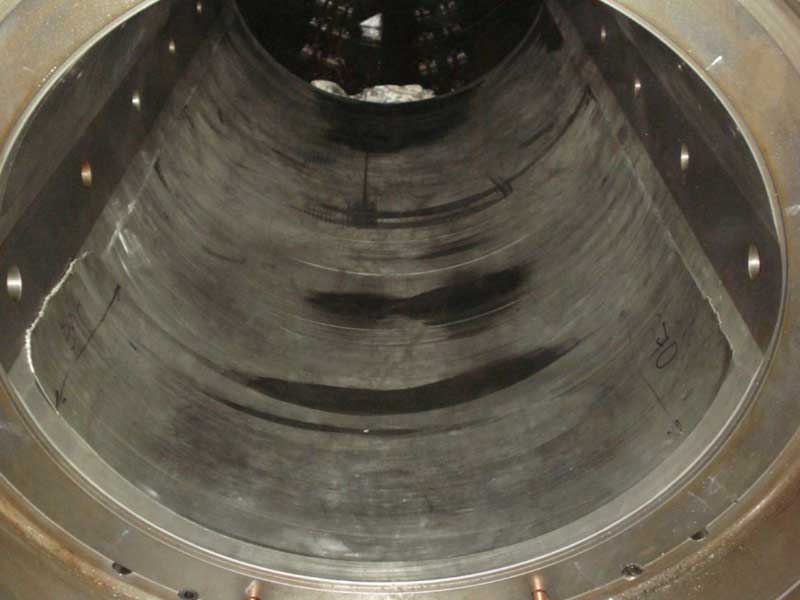
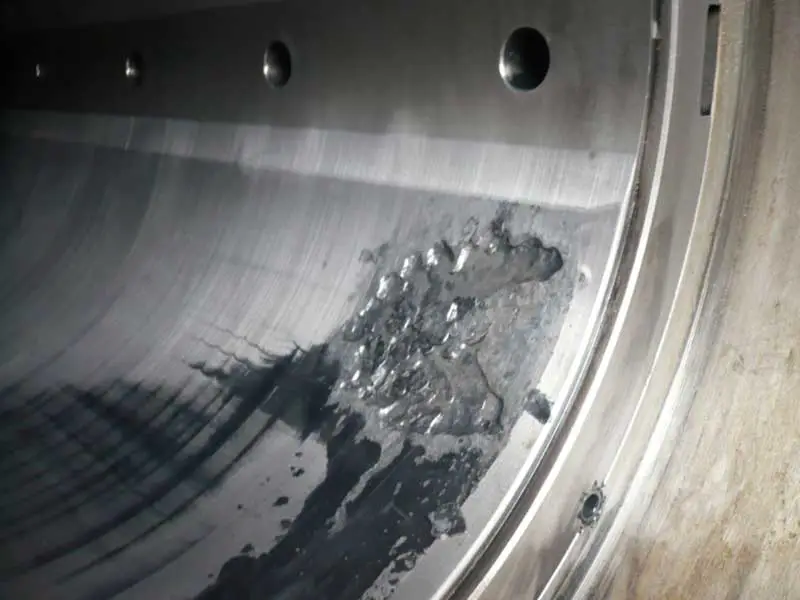
For non-metallic, water or oil lubricated, bearings the following points should be observed:
- Wear is derived from the bore diameter measurements versus shaft journal diameter and allowable design limits. An averse wear rate is then identified by considering the wear versus running hours since the existing bearing was fitted. In addition, adverse bearing conditions include areas of material smearing, discoloration, delamination, or cracking.
- The shaft journal should mainly work in the lower half of the bearing (as with metallic bearings).
- The bearing lower half should have polishing marks along the full axial length with heavier polishing at the aft end (as with metallic bearings).
- Water lubricated bearings typically exhibit polishing in the running areas due to fine particles in the water flow. A bearing surface that has suffered heavy wear and deep scoring can sometimes be caused by marine growth on the shaft journal.
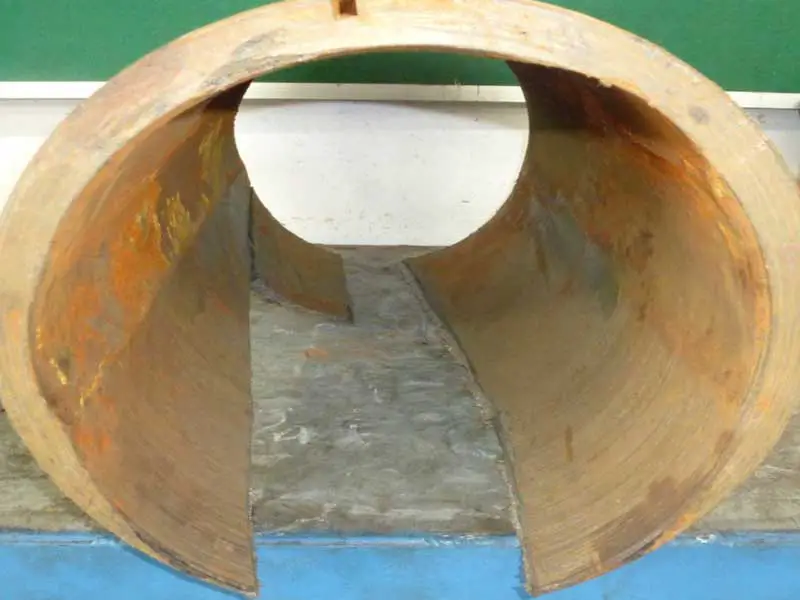
Related article: Intermediate Bearing Alignment Checks Using The Blue Contact Method.
Interesting article: Jack-Up Test Procedure For Ship’s Propulsion Bearings.
Propeller tailshaft inspection
The propeller shaft journal should be measured using a micrometer at axial steps of about 150 mm and in two directions. Propeller shaft journals in the way of the sterntube aft and forward bearings should be inspected and measured. Before any propeller shaft withdrawal, measuring the run-out with a dial indicator while the shaft is rotated on the turning gear is usual.
With the propeller tailshaft withdrawn, the following points should be observed:
- Deep scoring of the journal may be associated with heavy bearing wear. A scored propeller shaft journal would like to result in the wear of a replacement bearing. Careful assessment is required in consideration of any machining that may be contemplated. Note that polishing with emery around the journal (‘Swedish polishing’) can exacerbate a poor surface profile resulting in a worse running condition. The use of a hand stone is a better means of polishing to reduce high spots.
- Surface corrosion and pitting can occur under the seal liner as a result of water contamination. Corrosion debris should be removed and the surface polished. The taper should not be polished.
- The propeller shaft taper, aft journal, and aft end usually are subject to magnetic particle non-destructive testing for indications of cracks.
- Propeller shafts running in water-lubricated non-metallic bearings should be examined closely around the liner ends for indications of corrosion to the parent shaft material.
The seal technician would usually examine the seal box and shaft seal liner. Depending on the liner’s surface condition, the seal box spacer may be changed for a corresponding adjustment in lip running liner, or the liner may be machined and polished.
